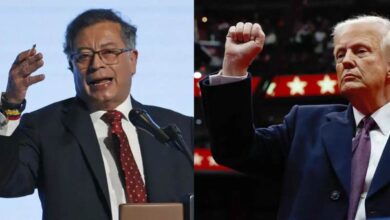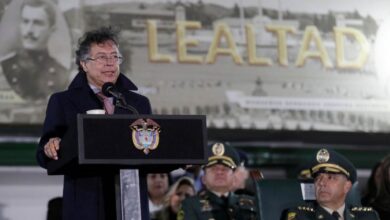Colombia: Guajira will be Gustavo Petro’s Policy Laboratory
Colombian President Gustavo Petro announced a state of emergency in this region to implement his policies that failed to pass at the national level.

Photo: TW-petrogustavo
LatinAmerican Post | Santiago Gómez Hernández
Listen to this article
Leer en español: Colombia: la Guajira será el laboratorio de las políticas de Gustavo Petro
La Guajira is one of the 33 departments and districts into which Colombia is divided. It is the 19th in population (about 1 million inhabitants) and the 25th in area. It is in the extreme north of the continent, with the southernmost point of South America bordering directly with Venezuela. In this part of the country, the president of Colombia, Gustavo Petro, sees an opportunity to demonstrate the projects he seeks to implement throughout the national territory.
The Colombian president faces a significant challenge in this department. Not only because it is second to last in the Human Development Index in Colombia, surpassed only by Guainía and Vaupés, but also because it has serious structural problems in terms of poverty and child malnutrition. Official figures indicate 67% poverty among the inhabitants and an under-five mortality rate of 21 per 100,000 births.
These problems are not only because La Guajira is predominantly a desert area with little vegetation and crops but also to historical problems of corruption and inequality. For example, the Cerrejón mine, one of the largest open-pit coal mines in the world, is located here. It produces more than 32 million tons of coal annually, which contrasts with the poverty rates in the department.
Emergency Declaration
This scenario is why Gustavo Petro announced a State of Social and Ecological Economic Emergency in La Guajira. One of his proposals is to support wind energy development in an area where strong breezes have always been a despised resource. This is with the idea of generating the longed-for energy transition promised by the leader of the Historic Pact since his campaign.
You can also read: Odebrecht Continues to Splash in Colombian Politics
Petro also seeks to implement a public health and education model that he hopes to scale up to the rest of the country. For several months, his request to pass a reform of the health system in Congress has yet to be successful. It was even the cause of the disintegration of the government coalition with the traditional parties. Many parties (the Liberal Party and the National Unity Party) saw health reform as an obstacle to continuing within the progressive bench.
In this way, the national government saw the possibility of easing fears and doubts about a different model. Despite the constant criticism of the mixed public-private model in the South American country, many are wary of a radical change that would jeopardize the few benefits they receive today.
Petro astutely, will use La Guajira as a model for his vision: a public health system focused on prevention. To this end, he seeks to build "300 extra-mural health teams that will be permanently deployed throughout the territory, providing vaccinations, nutrition, and the possibilities of preventive health and primary care".
For this, Petro requested the support of universities to send senior medical students to implement this project.
In addition, Petro also announced the creation of Wayuu University to increase the supply of public universities in the region, with the creation of medical and nursing schools.
Criticism of the Project
Despite its ambitious plan and the intention to settle the country's historical debt with the Department of La Guajira, there are several critical voices. Germán Vargas Lleras, former vice-president of Colombia (Juan Manuel Santos) and former minister of housing and interior, criticized the project publicly. The leader of the Cambio Radical party said in his opinion column in El Tiempo that "there was no need for a declaration of social and economic emergency. Let us be clear. This government did not have and did not have any plan for La Guajira".
Similarly, several opponents and critics believe that the decree needs more arguments to be upheld by the Constitutional Court. The former Minister of Trade and Finance in the government of Iván Duque, José Manuel Restrepo, told the Cali newspaper El País that "the decree is quite weak in demonstrating that there is a supervening event and even less about its impacts (El Niño phenomenon), and incredibly the historical figures that are annexed in health for malnutrition and infant mortality seem to prove the opposite."
Now it remains to be seen whether the highest judicial body will back the president's initiative, finding it well-founded. Without judging his projects, the Constitutional Court will have to assess whether there are sufficient elements for the president to govern by decree in La Guajira. But, if the court confirms it, Petro can implement the projects that he failed to approve in the rest of the country. A laboratory in which success will be transcendental for the future of his presidency, but failure could cost him credibility for his other projects.





